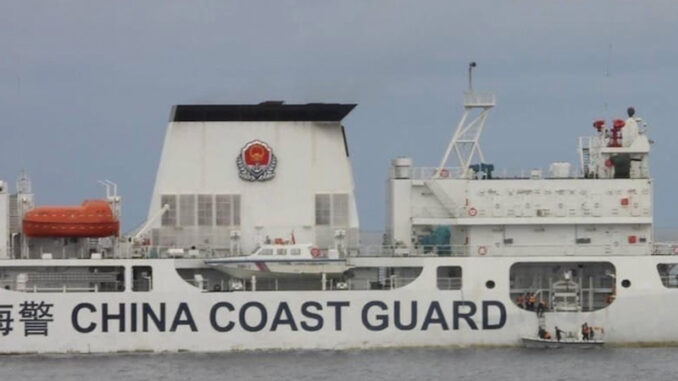
The number of Chinese ships continues to rise in Philippine water features in the West Philippine Sea (WPS), a Philippine Navy official said on Tuesday.
The latest monitoring report from the Philippine Navy reveals that 207 Chinese vessels were detected in the region from September 3 to September 9, a slight increase from the 203 vessels recorded between August 27 and September 2.
“This is within the force projection capability of the South Sea Fleet, the Chinese Coast Guard, and the maritime militia.” Philippine Navy Spokesperson for WPS Rear Admiral Roy Vincent Trinidad said.
Meanwhile, Beijing’s defense ministry said Wu Yanan, head of the Chinese army’s Southern Theater Command had held on Tuesday “an in-depth exchange of views” with Samuel Paparo, Commander of the US Indo-Pacific Command,
The two officials discussed “issues of common concern,” in the first-ever talks of their kind.
Paparo urged his Chinese counterpart to reconsider its use of “dangerous, coercive, and potentially escalatory tactics in the South China Sea and beyond.”
The Southern Theater Command is responsible for the Beijing military’s activities in the South China Sea, where Chinese vessels have engaged in a series of high-profile confrontations with Philippine ships in recent months.
Trinidad said 182 vessels were identified as Chinese maritime militia vessels (CMMVs), representing a significant rise from the 165 CMMVs observed in the previous period.
Additionally, there were also 18 China Coast Guard vessels (CCGVs), six People’s Liberation Army Navy (PLAN) warships, and one Chinese research and survey vessel (CRSV) during the September 3 to September 9 timeframe.
The majority of these vessels were concentrated around Sabina Shoal, where the Philippine Coast Guard’s BRP Teresa Magbanua (MRRV-9701) is stationed. In this area, 68 Chinese vessels were counted, including 55 CMMVs, eight CCGVs, and five PLAN warships.
Following Sabina Shoal, Iroquois Reef had 59 Chinese vessels, comprising 58 CMMVs and one PLAN ship. The Pag-asa Islands saw 50 Chinese vessels, including 49 CMMVs and one CCGV. Bajo de Masinloc had 13 vessels, with 12 CMMVs and one CCGV.
Additionally, 10 vessels were observed at Ayungin Shoal, consisting of eight CCGVs and two CMMVs. Lawak Island had four CMMVs, while Likas Island, Panata Island, and Rizal Reef each had one CMMV or CRSV.
Trinidad, however, said, the numbers do not mean that there is something suspicious. “In the first place, even with only one ship, their presence is already illegal within EEZ.”
China claims almost all of the economically vital body of water despite competing claims from other countries and an international court ruling that its assertion has no legal basis.
Tuesday’s high-level military dialogue between the geopolitical rivals comes on the heels of the first visit to China by a US national security advisor since 2016.
Top White House aide Jake Sullivan visited Beijing last month, where he held talks with senior army official Zhang Youxia.
Sullivan’s meeting with Zhang saw the officials agree to hold a call between the two sides’ theater commanders in the near future, the White House said.
The top aide also raised the importance of “freedom of navigation” in the South China Sea, where Beijing and Manila have clashed in recent months, and “stability” in the Taiwan Strait, Washington said.
Zhang, in turn, warned that the status of the self-ruled island was “the first red line that cannot be crossed in China-US relations.”
“China demands that the US halts military collusion with Taiwan, ceases arming Taiwan, and stops spreading false narratives related to Taiwan,” Zhang added.
A China embassy spokesperson in Manila has claimed that American military bases in the Philippines are an attempt to strategically use Taiwan to “contain China.”
According to the spokesperson, whose name was not disclosed, the four American military bases under the Enhanced Defense Cooperation Agreement (EDCA) are a threat to peace development, especially in its internal affairs with Taiwan.
“Of the four new EDCA sites opened by the Philippines to the United States, three are located in the northern part of Luzon, just ‘across the sea’ from Taiwan, and one of which is only 400 kilometers away from Taiwan,” the spokesperson said.
“It is obvious that the US is attempting to use EDCA sites to interfere in the Taiwan question at the expense of the peaceful development of the Philippines and the region,” they added.
China warned the US against “external interferences and secessionist activities” and said it will “reserve the option of taking all necessary measures” but “won’t renounce the use of force.” With AFP


Be the first to comment